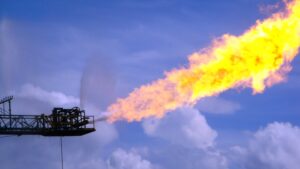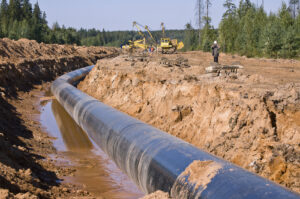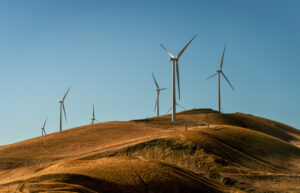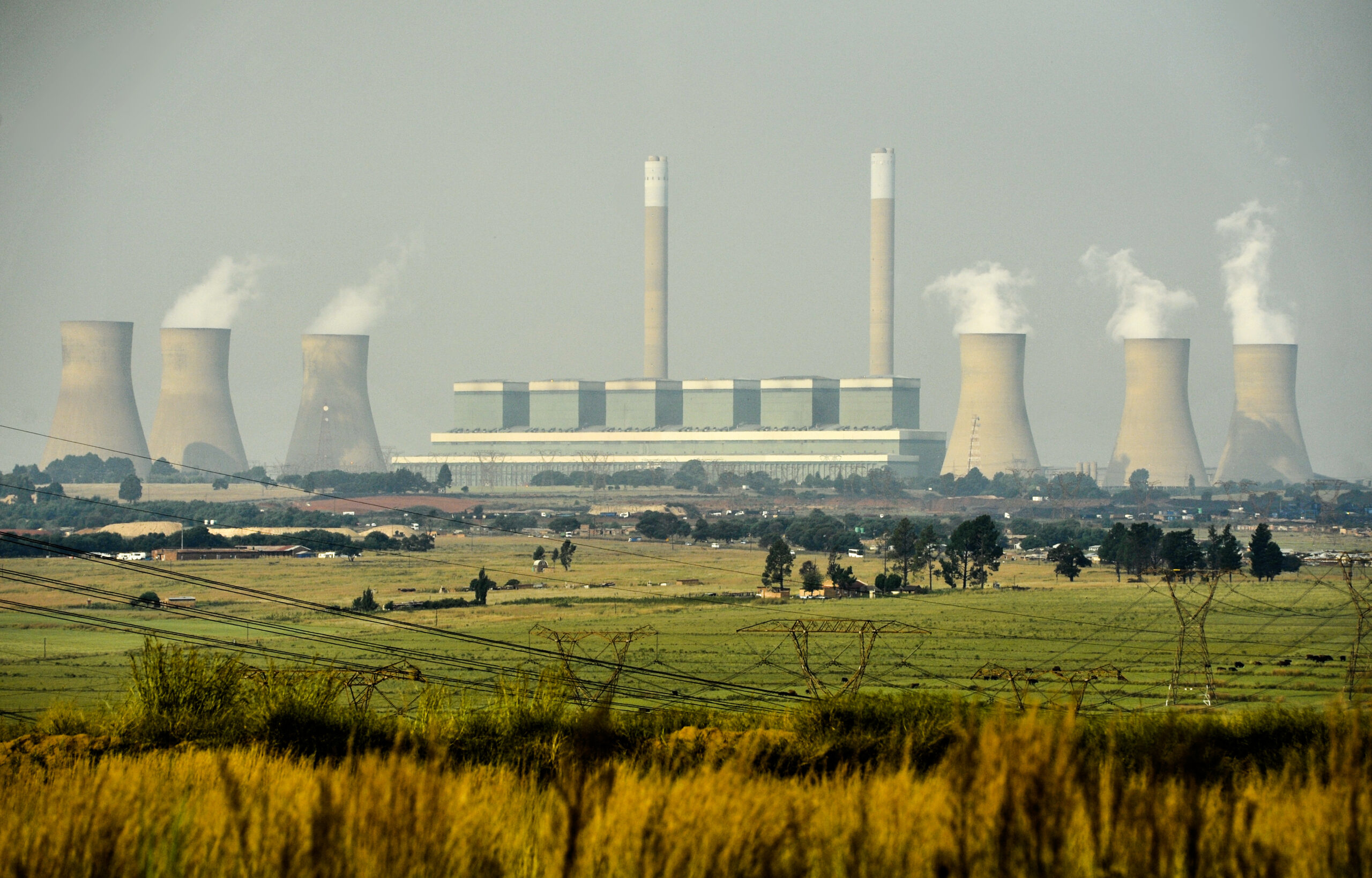The pros and cons of natural gas in South Africa
As a signatory of the Paris Agreement, South Africa has committed to a “phase down” of coal and a just transition to clean energy. However, the gas industry has long claimed that natural gas serves as a “bridge fuel” between coal and renewables in South Africa. Although researchers have found this notion to be “misleading“, Gwede Mantashe, Minister of Mineral Resources and Energy, maintains that accelerating gas developments is crucial to the nation’s energy transition.
However, International Institute for Sustainable Development (ISSD) analysis finds the evidence does not support Mr Mantashe’s claim. In fact, the opposite could well be true. The government’s 2019 Integrated Resource Plan (IRP) and Gas Master Plan (GMP) propose to open up new gas fields, build new gas-to-power plants and LNG (liquefied natural gas) terminals, and lay thousands of kilometres of pipelines. Such plans are vastly expensive, would lock consumers into more expensive bills, and add to the climate and ecological crisis. It could also lead to a “resource curse“, which can cause many negative consequences, including social conflict and lower economic growth.
South Africa does not need more gas
South Africa currently uses relatively little natural gas in its energy mix. In 2021, the fuel accounted for just three per cent of energy consumption. Expert analysis suggests that it should stay this way. “As the least-cost, lowest carbon supply option with shortest lead times, renewables must form the basis of all new generation infrastructure to address current power shortages, enable optimal pumped storage usage and allow for ambitious coal phase-out”, states a report from the ISSD.
Given rapid advancements in the technology and economics of renewables and storage, energy analysts have found South Africa’s gas plans to be “suboptimal, outdated, or no longer fit for purpose“. While the government is reviewing the 2019 IRP in response to such stakeholder feedback, its push for gas developments has continued. Other studies also critique the government’s plans for more gas, and outline the many environmental, economic and human risks of this path.
Downsides of natural gas
Gas drives the climate crisis
Gas is a fossil fuel and a leading driver of the climate crisis. Two flagship reports from the International Energy Agency (IEA) and IISD are clear that new fossil fuel projects are incompatible with net-zero emissions. Another from Nature finds that new gas infrastructure puts the renewable transition at risk. Due to its high methane content, natural gas can also be as climate-damaging as coal. Therefore, South Africa’s plans for new gas developments threaten urgent global efforts to limit warming.
While the much-needed transition away from coal is in progress, South Africa’s nationally determined climate plan remains insufficient to meet the goals of the Paris Agreement. Current goals are consistent with temperatures 2°C higher than in pre-industrial times. At this level of warming, the risk and severity of droughts, heatwaves, floods, species extinctions, sea level rise, food and water security, and disease are increased dramatically versus 1.5°C. Developing new gas projects would simply add fuel to the fire.

Gas extraction damages wildlife and ecosystems
Plans for new onshore and offshore gas fields for exploration and extraction in South Africa would be a disaster for wildlife and the environment. On land, extraction involves the land disturbance of drilling wells and building pipelines and roads. This fragments and destroys critical wildlife habitats, crucial for breeding and migration. For such reasons, the controversial plans to frack for shale gas in the semi-arid Karoo basin, known for its unique scenery and rare wildlife, have been met with strong opposition. Moreover, fracking poses further significant risks, including chemical spills and groundwater contamination.
Offshore gas exploration is equally destructive. Specifically, it can negatively impact marine animals due to high noise levels during seismic surveys. In addition, the accidental release of gas or blowouts could release toxic chemicals into the water and air. This both pollutes the ocean habitat and damages the livelihoods of humans. Three of the country’s senior scientists have condemned South Africa’s plans for offshore gas fields as “morally indefensible” in the face of the climate and ecological crisis.
Shale gas extraction threatens water security
As well as contaminating water sources, fracking for shale gas requires vast amounts of water. Each well requires tens of millions of litres to operate. At a time when severe droughts and water scarcity threaten South Africa, fracking for shale gas would add indefensible pressure on already scarce and essential resources.
The Karoo is already a semi-arid region and still faces a crippling drought that began in 2014. Moreover, around 95 per cent of the communities there depend on groundwater from underground aquifers as their primary water resource. The Karoo regional economy also relies on farming, which requires freshwater stored in these aquifers. Fracking could decrease water security and worsen air pollution, which may adversely impact agriculture – the provider of most jobs in the region.

Natural gas in South Africa threatens human health
The extraction, processing and burning of gas is a key emitter of air pollution, which inflicts a huge health burden. The poor air quality around fracking sites and gas power plants is associated with respiratory and cardiovascular disease, as well as cancer. Globally, air pollution, primarily from burning fossil fuels, causes 13 deaths per minute. Wastewater from fracking can be radioactive and includes chemicals known to be carcinogenic to humans.
In addition to the direct health threats from air and water pollution, gas is a leading driver of climate change. The cascading impacts, including extreme weather events, food and water scarcity and disease, are the world’s greatest health threat, stated the WHO in 2021. “The burning of fossil fuels is killing us. Climate change is the single biggest health threat facing humanity”, the organisation warned.
New gas infrastructure is expensive, uncompetitive and risks stranded assets
New gas extraction, infrastructure and plants require significant investment, and it can take years for gas to come online. Now that renewables are cheaper and quicker to deploy, new gas projects would lock consumers into higher bills. The natural gas industry in South Africa might require hefty government bailouts to keep the uncompetitive sector going, or otherwise lead to early retirements of gas fields, plants and pipelines. Furthermore, policies like a tax on methane indicate that future products produced with gas power may face higher tariffs when exported. For such reasons, “emissions-wary investors” are already turning away from gas as they did with coal.
These pressures mean South Africa’s current plans for gas development risk many billions in stranded assets, warns the IISD. “South Africa is potentially on the verge of a gas investment flurry that could prove to be a very expensive mistake for the South African people”, states the institute’s report. “Many of these indications come from economically and politically powerful gas interests, including interests inside government.”

Gas cannot compete with cheaper renewable alternatives
In contrast to the significant costs associated with gas extraction and infrastructure, the costs of wind and solar storage technologies are declining exponentially. Clean energy projects can also generate power much more quickly. As a result, they can more rapidly curb high electricity prices while addressing South Africa’s immediate energy security issues including blackouts. “Renewables are the least-cost option to address the supply shortage, meet new demand, and replace the coal fleet as it is retired”, states the IISD report.
By 2016, wind and solar were already 56 per cent and 78 per cent cheaper respectively than electricity from gas turbine plants. Costs have continued to fall since then. Furthermore, renewable energy is generally decentralised and more democratic than fossil fuels. For example, installing renewable generators in communities where energy and jobs are most needed boosts local economies. Investing in solar and onshore wind creates at least ten times as many jobs per year per megawatt of power generated compared to gas. At the same time, expanding energy security with cheap and homegrown renewables protects countries from volatile, international fossil fuel prices.
Pros of natural gas and liquefied natural gas
Given the many risks and negative impacts of gas, while cheaper, cleaner renewable technologies are available, there is no scenario where more gas is the best option for South Africa. Nonetheless, some modellings have found “very rare occasions” where South Africa’s existing gas capacity might be needed, according to the IISD. This is a scenario where dispatchable generators, like gas turbines, are required alongside renewables and storage. If needed, this pathway also allows liquid fuels – again within the existing capacity – to provide this function until at least 2035.
However, policymakers much consider what is best for the people of South Africa, not what benefits the gas industry, affirms the IISD report. “In reality, gas-to-power faces many risks and is not where efforts should be focused now”, it states.
Renewables offer a better future than natural gas in South Africa
While it is clear that the many negative impacts of natural gas far exceed any possible positive gain, the question remains whether the government should proceed with its current plans. However, as the IISD warns, this could be an “expensive mistake“.
For strong and sustainable economic growth, renewables are the answer, says UN Sectary General António Guterres. “We do have infinite resources at our disposal when it comes to energy needs. Wind, sun and tides never run out”, Mr Gutteres said in a speech in June 2022. For South Africa, harnessing the country’s renewable power capacity and investing in the green economy will offer 1.8 million job opportunities by 2030, suggests research from C40 Cities. A further study concluded that “a 100 per cent renewable energy system is the least-cost, least-water intensive, least-GHG-emitting and most job-rich option for the South African energy system.” This transition to establish sustainable and affordable energy security for the country would also pay back in less than six years.
In 2020, the government handed out over R100 billion in subsidies to the fossil fuel industry. This amounts to throwing good money into a polluting, dying industry. Conversely, public investment in renewables would lay the groundwork for a boom in private investment into clean energy – as outlined in the country’s flagship Just Energy Transition Partnership. For South Africa and nations worldwide, the overwhelming benefits of divesting from gas and ramping up renewable capacity are too strong to ignore.
Related Articles
The bad reason South Africa is making good on emissions targets
If current carbon emission trends continue, South Africa might actually be on track to meet its 2030 emissions targets under the Paris Agreement. This is according to research done by the Department of Forestry, Fisheries and the Environment (DFFE). And the reason for this? Mostly load shedding. The data was revealed in the DFFE’s 2023 […]
Eskom: Green energy saves water
Generating electricity from fossil fuels has a hidden cost: South Africa’s already scarce supply of fresh water.




